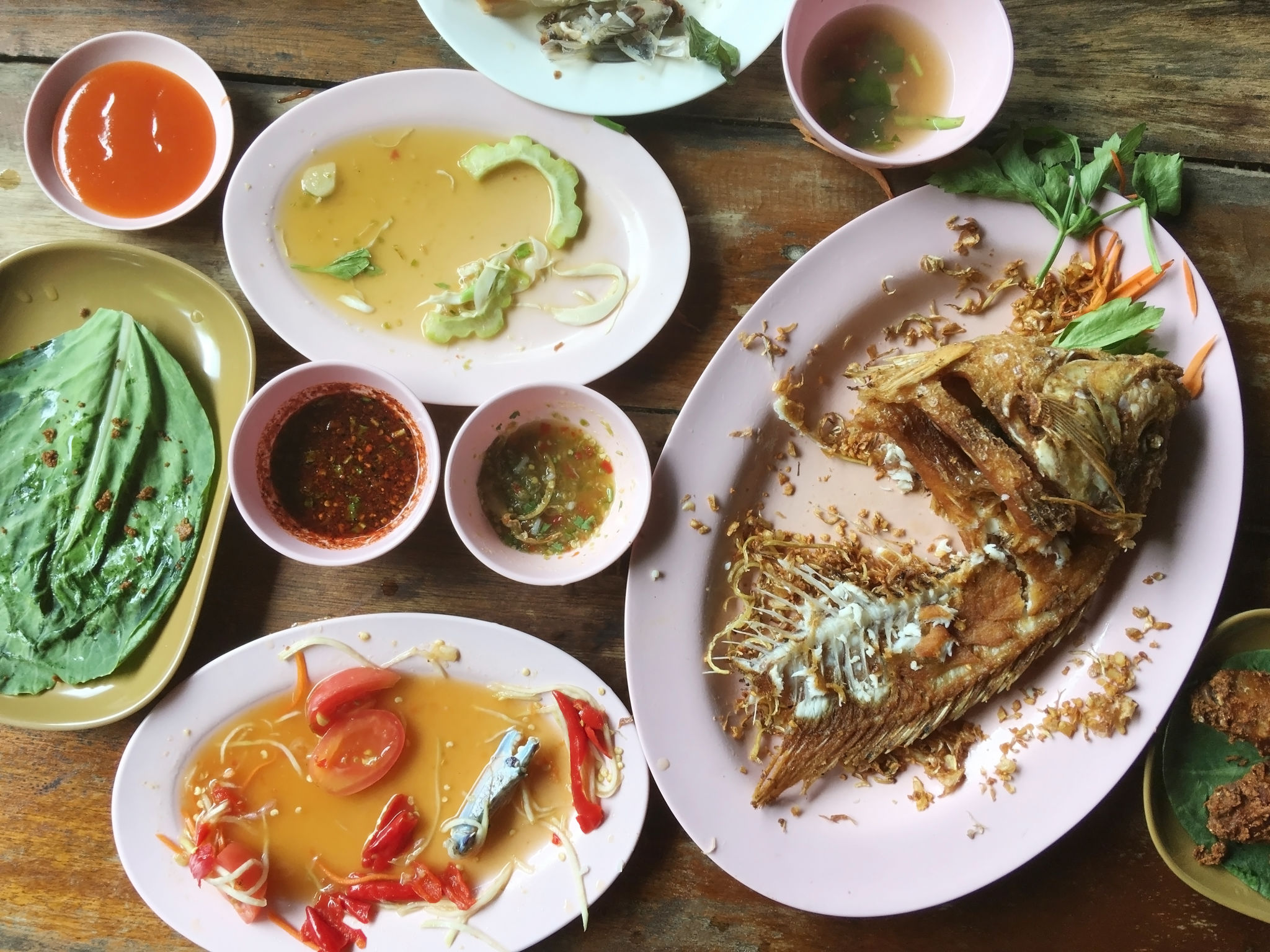🍲 Foodie Travel in Thailand – Where Every Dish Tells a Story
🍲 Foodie Travel in Thailand – Where Every Dish Tells a Story
1. Introduction – In Thailand, You Don’t Just Eat. You Listen.
In Thailand, food isn’t just food. It’s a memory, a ritual, a celebration.
It’s a grandmother grinding curry paste at dawn. A street vendor who’s perfected her noodle broth for 30 years. A plate passed around during Songkran. A bowl of soup at a funeral.
Every dish has a story. And if you travel slowly enough, you’ll start to hear them.

2. More Than Pad Thai – The Taste of Place
🍜 In the North – Earthy, Warming, and Deep
Try Khao Soi, the coconut curry noodle soup with crispy noodles and pickled greens, often served with a squeeze of lime. It’s Chiang Mai’s soul in a bowl.
🌶️ In the Northeast – Bold, Tangy, and Wild
Som Tum (papaya salad) hits you with sour, spice, and crunch – often eaten with sticky rice and grilled chicken. It’s Issan’s flavor anthem.
🥥 In the South – Fiery and Coastal
From Tom Yum Goong to Gaeng Tai Pla, the south doesn’t hold back. Here, the food is hotter, saltier, richer – with seafood at the heart of every table.
🥬 In Central Thailand – Balanced and Iconic
You’ll find Pad Thai, Green Curry, Massaman, and more – dishes that reflect a blend of royal recipes and street genius.
3. The Slow Food Experience – Savoring, Not Rushing
To truly taste Thailand, don’t rush.
- Sit at a tiny plastic table and watch the cook move like poetry behind the wok
- Eat with your hands at a countryside home and learn how rice isn’t just food — it’s sacred
- Try a dish you can’t pronounce and don’t understand — then let the flavor explain itself
Here, food isn’t about eating quickly.
It’s about being present.
4. Places to Eat That Feel Like Stories
Jok Prince (Bangkok) – A humble rice porridge spot with smoky flavors and a Michelin Bib
Cooking with Poo – A community cooking school in a Bangkok slum, empowering locals through food
Chiang Mai Night Bazaar – Street food that’s alive with color, fire, and laughter
Seafood markets in Krabi or Surat Thani – Where you point to a fish and it’s grilled right there
Floating markets near Amphawa – Eat from a boat, seated on a pier, with the scent of grilled prawns in the air
5. Joining the Story – Not Just Tasting It
- Take a Thai cooking class with locals
- Visit a rice farm and harvest by hand
- Learn the meaning of “Nam Jai” – the Thai spirit of generosity, often expressed through food
- Ask the vendor: “How long have you made this?” – and listen
- Try eating without cutlery – just hands and respect
6. Tips for the Thoughtful Foodie Traveler
- Be curious, but respectful — not every dish is for Instagram
- Carry tissues — some street food stalls don’t provide napkins
- Mind your spice tolerance — always ask “Phet mai?” (Is it spicy?)
- Don’t just eat at fancy places — the best food is often at the corner stall
- Learn one or two Thai food words — it goes a long way
7. Approximate Costs
- Street food: 30–80 THB per dish
- Local restaurants: 100–250 THB per meal
- Cooking class: 1,000–2,500 THB
- Floating market food tour: ~1,000 THB per person
- Upscale dining (Michelin, fusion): 1,500–5,000+ THB
Food in Thailand can be as affordable or as fancy as you like — but it’s always rich in story.
To eat in Thailand is to understand a country without needing a guidebook.
It’s to share in something ancient, generous, and deeply human.
The best Thai dishes don’t come with perfect plating. They come with warmth, with memory, with meaning.
So next time you take a bite, pause. Listen. The story is already on your tongue.
Thanks for joining me on this flavorful journey across Thailand.
If food is how you connect, you’ll find plenty more stories on this blog — from eco retreats to cultural walks, and of course, more dishes waiting to be tasted.
